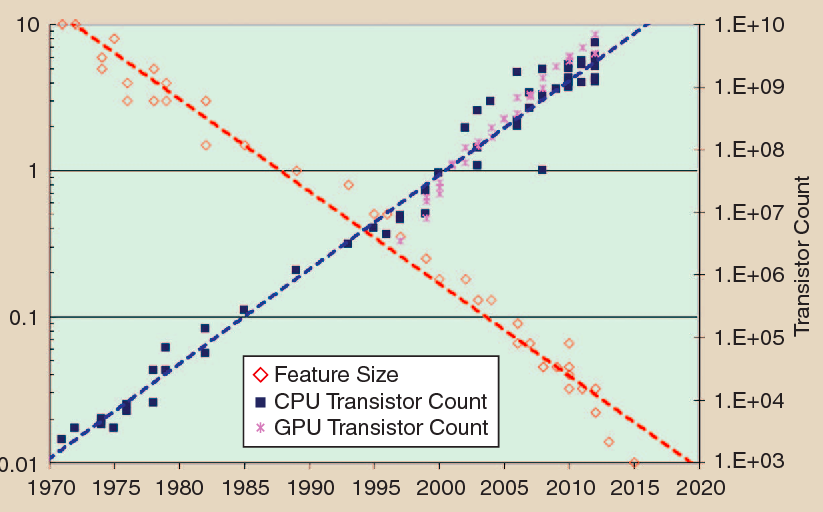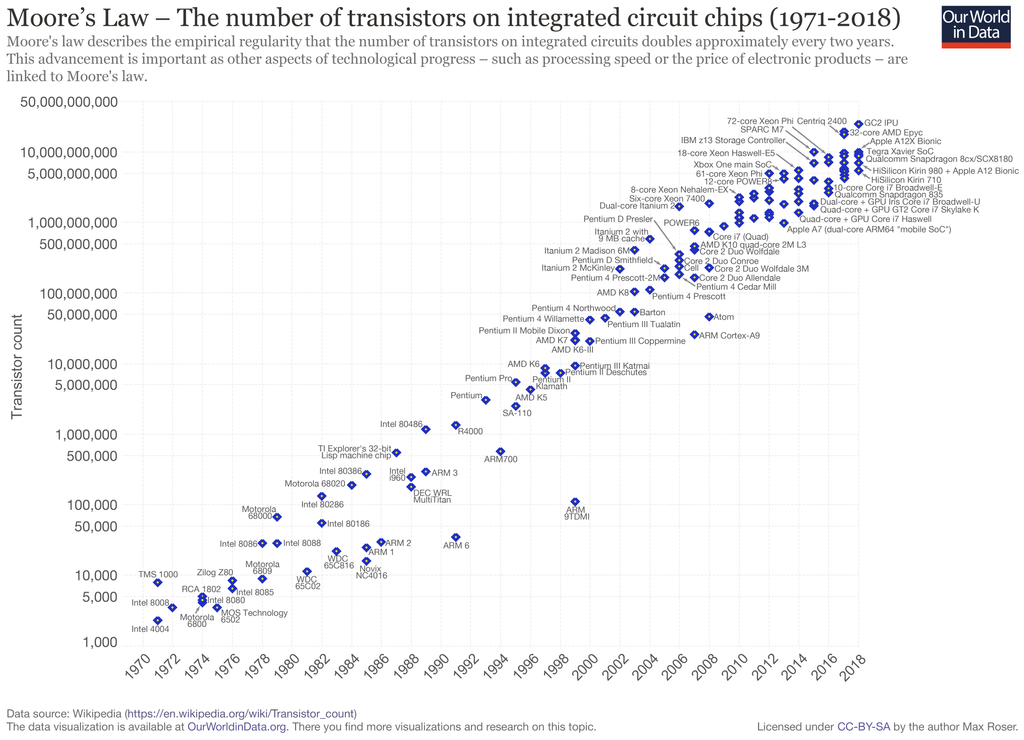Transistors are electronic switches in IC’s which drive all the electronics today and are fundamental to growth in tech and computing. They are nearing the end of Moore’s Law ( with states doubling transistor count and reducing gate size every 2 years ) . We are now almost at a stage of having quantum or atomic dimensions between the ends of the gates in a transistor.
Silicon’s atomic size is about 0.2 nanometers and transistor’s size is 14 nanometers across. Therefore todays processors have transistors of about 50-70 silicon atoms in between .

Detailed view of Moore’s Law wrt to transistor count

The engineering hurdle at such nano dimension is to prevent Quantum tunnelling to allow electronics to pass through inspite of having an energy barrier in the switch.
Quantum Tunnelling
In classical physics an objects stays in its field as long as its energy level is below the energy of alternate fields.
But Quantum physics predicts that there is a finite probability that an object trapped behind a barrier may at times appear on the other side of the barrier and this happens without actually overcoming it or breaking it down.
In simple words there is a probability that even without the energy, a subatomic particle overcome the barrier.
An example can be seen in radioactive decay in which a nucleus emits an alpha particle
Quantum tunnelling Equation
If particle has Energy E and potential barrier is V , in classical mechanics, if E < V (the maximum height of the potential barrier), the particle remains in the well forever; if E > V , the particle escapes.
However in Quantum tunnelling , if E is close to V , particle can escape even if its energy E is below the height of the barrier V. The particle may tunnel through the potential barrier and emerge with the same energy E.

The probability, P , of a particle tunnelling through the potential energy barrier is derived from the Schrödinger Equation and is described as,
 with E<V
with E<V
where
- V is the potential barrier,
- E is the kinetic energy possessed by the particle, and
- a is the thickness of the barrier.
- m is mass of the particle
- h is Planks Constant ( 6.6260×10−34m2kg/s )
Ref :
- Computer SciencePublished in IEEE Consumer Electronics… 2014
DOI:10.1109/MCE.2014.2317896
Silicon Process and Manufacturing Technology Evolution: An overview of advancements in chip making. - https://en.wikipedia.org/wiki/Quantum_tunnelling
- http://abyss.uoregon.edu/~js/glossary/quantum_tunneling.html
- Quantum-Mechanical Tunnelling – https://chem.libretexts.org/Courses/University_of_California_Davis
